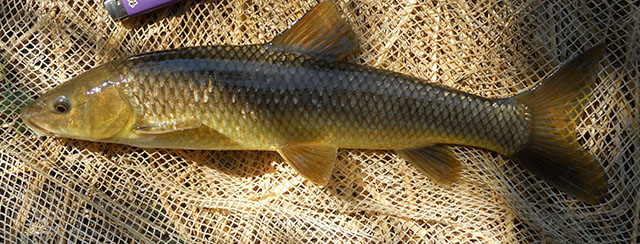| Cyprinidae (Minnows or carps), subfamily: Barbinae |
| 50 cm SL (male/unsexed) |
|
benthopelagic; freshwater |
| Europe: Greece in Kifissos and Sperchios drainages, including Lakes Yliki and Paralimni (Ref. 59043). Reported from Albania (Ref. 12255). |
|
Diagnosed from other species of Barbus and Luciobarbus in Balkan Peninsula by having the following characters: 39-44 + 2 scales on lateral line; 18-20 scale rows around caudal peduncle; snout with large tubercles in large individuals; last simple dorsal ray slender, serrated posteriorly along half to entire length; posterior margin of dorsal fin straight; and lower lip thin, without median lobe (Ref. 59043). |
| Inhabits lakes and streams with stone and gravel bottom (Ref. 59043). Occurs in water bodies in low-lying plains with little current. Feeds on invertebrates and algae. Threatened by water abstraction and pollution (Ref. 26100). Size reaches up to at least 50 cm SL (Ref. 59043). |
|
Endangered (EN); Date assessed: 31 January 2006 (B1ab(i,ii,iii,iv)+2ab(i,ii,iii,iv)) Ref. (130435)
|
| harmless |
Source and more info: www.fishbase.org. For personal, classroom, and other internal use only. Not for publication.

